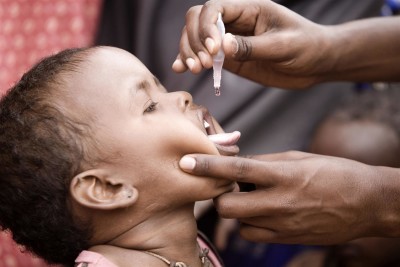
FOR the second time in three years, Nigeria is on the cusp of securing a clean break from its association with an infamous trio of poliovirus transmitting countries that includes Afghanistan and Pakistan. Until India was declared polio-free in 2014, the four countries were for years the only places where the virus was being transmitted globally.
But more than three years after Nigeria’s initial bid to pass a vital test of polio eradication came painfully unstuck on August 21, 2016 – following two years of continuous polio transmission interruption – the country has now gone a step better, by going more than three years without reporting a single case of polio outbreak. This is the most significant landmark for a country to be certified polio-free by the World Health Organisation.
This is indeed a remarkable milestone for a country that, as of 2012, accounted for more than half of the polio cases around the world. While the Global Polio Eradication Initiative put the number of polio cases in Nigeria then at 121, Pakistan and Afghanistan were credited with 58 and 37 respectively. It is also an evidence of how much could be achieved by a country if there is single-mindedness in the pursuit of a cause. To get to this stage, Nigeria has defied many odds, including a dysfunctional health system with decayed infrastructure occasioned by corruption and the stealing of funds meant to tackle health issues.
Nigeria’s case has been further worsened by actions of the anti-vaxxers, who have resisted the vaccination of children on the grounds that it is part of a Western ploy to sterilise the people and force down their population, especially in the northern part of the country, which has become the last bastion of the disease. In a most striking incident, in 2013, nine health workers administering polio vaccines were shot dead in Kano in two separate incidents. It was indeed a big setback to efforts to roll back the disease.
Poliomyelitis, often shortened to polio, is a highly infectious killer disease that invades the nervous system and can result in irreversible paralysis in a matter of hours. A disease that can be contracted under unsanitary conditions such as the ingestion of dirty water, it is most commonly found among children below the age of five years. Initial symptoms, according to WHO, include fever, headache, vomiting, fatigue, stiffness of the neck and pains in the limbs. Only one out 200 cases of infection leads to paralysis and between five and 10 per cent of cases could result in death when their breathing muscles become demobilised.
But Nigeria now stands on the threshold of being declared polio-free, especially as the WHO team that visited recently departed with satisfaction after assessing the situation of things in Lagos, Oyo, Abia, Ebonyi, Delta and Edo states. These were states chosen randomly by the team of inspectors, who will return at an unspecified date for another round of inspection. This, certainly, calls for celebration. But while there is cause for euphoria, the situation also calls for caution because anything could still happen between now and the middle of the year when the certification is expected to be confirmed.
While the crippling disease does not have a cure, it is possible to prevent its spread through vaccination. If children are immunised multiple times, it provides protection against the disease, which can also curb its transmission. It was based on this premise that the 41st World Assembly in 1988 adopted a resolution for the worldwide eradication of polio by the year 2000.
Although the target has been missed by 20 years, the world recorded the elimination of the disease in the WHO Region of the Americas in 1994, Western Pacific Region in 2000 and European Region in 2002. With India taking leave of the polio transmitting club on March 27, 2014, the WHO South East Asia Region also became certified polio-free.
Polio is one of the diseases the world is trying to eradicate, having done so with smallpox in 1980. Efforts so far have shown that the world is on track to achieving polio eradication, especially after the reduction of the incidence of the disease by 99 per cent since 1988. WHO’s record shows that by that year, over 350,000 children across 125 endemic countries were paralysed every year as a result of polio. Since only one out of 200 cases result in paralysis, it means 70 million children were infected every year. This came down to 33 cases in 2018, reported in just two countries, Afghanistan and Pakistan.
Nigeria therefore has a big role to play in achieving the target of a polio-free world. By exiting that group, the country will not only be pushing the world towards achieving the goal, but will also take away that negative label from Africa. This therefore will depend on Nigeria’s ability to take the vaccines to all the nooks and crannies to ensure that no child is left out. With the threats of terrorism and banditry in many parts of the North, getting the vaccines to every child becomes doubly challenging for health workers, who are also targets of the extremists operating in that part of the country.
WHO says polio eradication will save the world between $40 billion and $50 billion, mostly in low income countries. It will also ensure that no child suffers a life-long paralysis as a result of polio. The efforts of WHO and its partners have saved more than 18 million people from paralysis and 1.5 million children from death. As long as there is a single case of polio, no child anywhere is safe. Nigeria, Pakistan and Afghanistan should therefore straighten up to ensure that the success so far is not reversed.
END

Be the first to comment